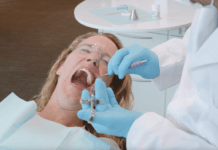In 2016, a sample of 459 six-year-old school children was given dental sealants in New Caledonia, a French territory and island in the South Pacific. Implementation And Impact Of A Dental Preventive Intervention Conducted Within A Health Promotion Program On Health Inequalities: A Retrospective Study by H. Pichot, B. Periera, et al. studies the revisitation of the children a year later and determines how effective the sealants were in protecting these children from dental issues, such as caries.
New Caledonia
New Caledonia is the wealthiest island in the South Pacific, but that doesn’t mean that there aren’t areas of poverty and areas in need and the population with the lowest resources have the highest rate of obesity, obesity-related illnesses, and dental problems. In 2011, it was discovered that 60% of grade school children and 50% of twelve-year-olds had untreated caries. Obesity is high among these children, and everyone has access to some form of dental care, but not always the money to do so.
The dental sealant program began in 2009 as a way to decrease the damage done on the teeth of six-year-olds to give them a healthy boost towards wishful cavity-free future. But, do these sealants work for these particular children? Dental sealants have usually been a very effective prevention method in many other parts of the world. New Caledonia decided that sealants, along with a comprehensive educational plan, should be an effective starting point for their young children in order to change their oral hygiene habits. The goal was to increase the health of each child with no bearing on their parents’ monetary situation.
The Study
The children were randomly chosen using a computerized clustered sampling method. The same amount of children were selected from each area of the island, which was naturally divided up due to socioeconomic status many years before in order to give each child the same chance and to fully assess whether the sealants would work for any child. The children from the same area were usually chosen from the same school and were examined by the same dental professionals in relation to the sealants’ effects on each child’s particular teeth. They began the process by giving each child a complete dental exam and recorded their findings. The dental professionals applied the sealants and then educated the child on how best to care for them. Then they came back one year later and evaluated the children again.
The Results
After one year, 85% of children still had some form of the sealant on their teeth, and the number of caries that they had was directly related to the amount of sealant left remaining. 31% of the children had full sealants still remaining, and therefore much fewer caries than other children, and 52% still had partial sealants left and were becoming more susceptible to future caries. It was discovered that the children who lived in the most deprived areas fared the worst with higher caries, though not as high as they would have been without the sealants when compared to other children the same age and monetary status.
Unfortunately, children’s teeth erupt on their own time. Many caries present in the children’s teeth were in areas that may not have been covered because they hadn’t fully erupted. What this study showed is that though there is access to dental care, there is still a need for community outreach towards those in our populations who, for one reason or another, cannot reach dental professionals on their own. Sealants are effective and not available enough in the neediest populations. Routine dental care and education work in deprived areas only when they are present and available to everyone.
This study discovered that sealants are highly effective for children with adequate nutrition and dental attention but not as effective for children unable to receive such care due to a lack of money or dental care availability. Deprived areas would benefit more from sealants if they were applied more often or at least given the opportunity for better dental care.











